The POCO F7 is an impressive budget flagship that offers excellent performance and battery life, highlighted by a 7550mAh battery for exceptional endurance. Powered by the Snapdragon 8s Gen 4 chipset, it delivers near-flagship performance, particularly for gaming and multitasking. The 6.83-inch AMOLED display is vibrant, and the IP68 rating enhances durability. However, its camera system is a downside, featuring mediocre ultrawide and selfie cameras and lacking a telephoto lens. Priced around ₹31999, it competes well with higher-end models like the Samsung Galaxy S24 FE and OnePlus 13R. While it may not match the camera quality of its rivals, the POCO F7 is an excellent choice for power users and gamers on a budget.
The Good
- Massive 7550mAh battery with excellent endurance
- Flagship-grade Snapdragon 8s Gen 4 performance
- Vibrant 6.83-inch AMOLED display with 120Hz refresh rate
- IP68 dust and water resistance
- Fast 90W wired charging
The Bad
- Noticeable weight may take time to get used to
- Mediocre ultrawide and selfie cameras
- No wireless charging
- Thermal throttling during prolonged gaming
-
Build & Design
-
Performance
-
Camera
-
Battery
The POCO F7 continues the brand’s tradition of offering flagship-level performance at an affordable price. As the successor to the highly praised F6, the POCO F7 is notable for its impressive 7,550mAh battery, a remarkable achievement for a device that remains relatively compact in design. However, does it truly provide the best value for your money, or are there sacrifices that detract from its appeal? Let’s explore.
Build & Design
The POCO F7 effectively combines premium aesthetics with practical design, though it does have some quirks. Measuring 163.1 x 77.9 x 8.2 mm and weighing 216 g, the phone feels quite heavy in hand, primarily due to its large battery. This weight is noticeable and may require some adjustment for users who are used to lighter devices. However, the heft contributes to a feeling of durability, and the build quality is impressive for its price point.
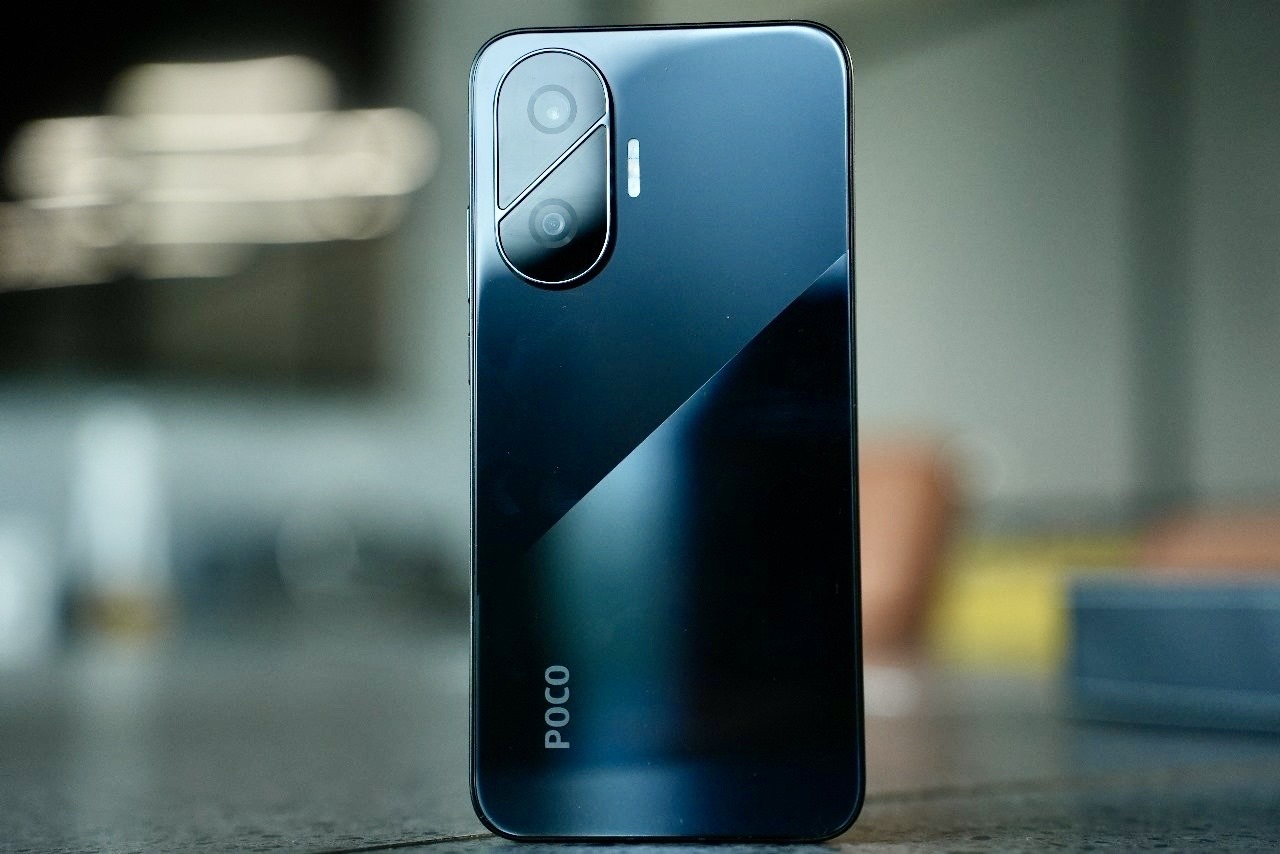
The POCO F7 features a glass front and back, protected by Gorilla Glass 7i, along with an aluminium frame. This combination gives it a premium feel, and the IP68 rating for dust and water resistance enhances its protection. The design is sleek, featuring a two-tone back. The slim bezels surrounding the 6.83-inch AMOLED display enhance the immersive experience, and the flat OLED panel, with peak brightnesses of 3,200 nits and 1,525 nits in auto mode, ensures excellent visibility even in bright sunlight.
The camera island also includes an IR blaster, a practical addition for controlling appliances. However, the glossy finish on the glass back easily shows fingerprints with just a touch from bare hands. Additionally, the weight distribution due to the large battery can make prolonged use slightly tiring.
Performance
The POCO F7 is equipped with the Qualcomm Snapdragon 8s Gen 4 chipset, which is a 4nm processor. This chip features one Cortex-X4 prime core operating at 3.2 GHz, three Cortex-A720 cores running at 3.0 GHz, two at 2.8 GHz, and two at 2.0 GHz. It is paired with an Adreno GPU clocked at 1,150 MHz, providing near-flagship performance. With 12GB of LPDDR5X RAM and 512GB of UFS 4.1 storage (also available in a 256GB variant), the F7 is designed for speed and efficient multitasking.
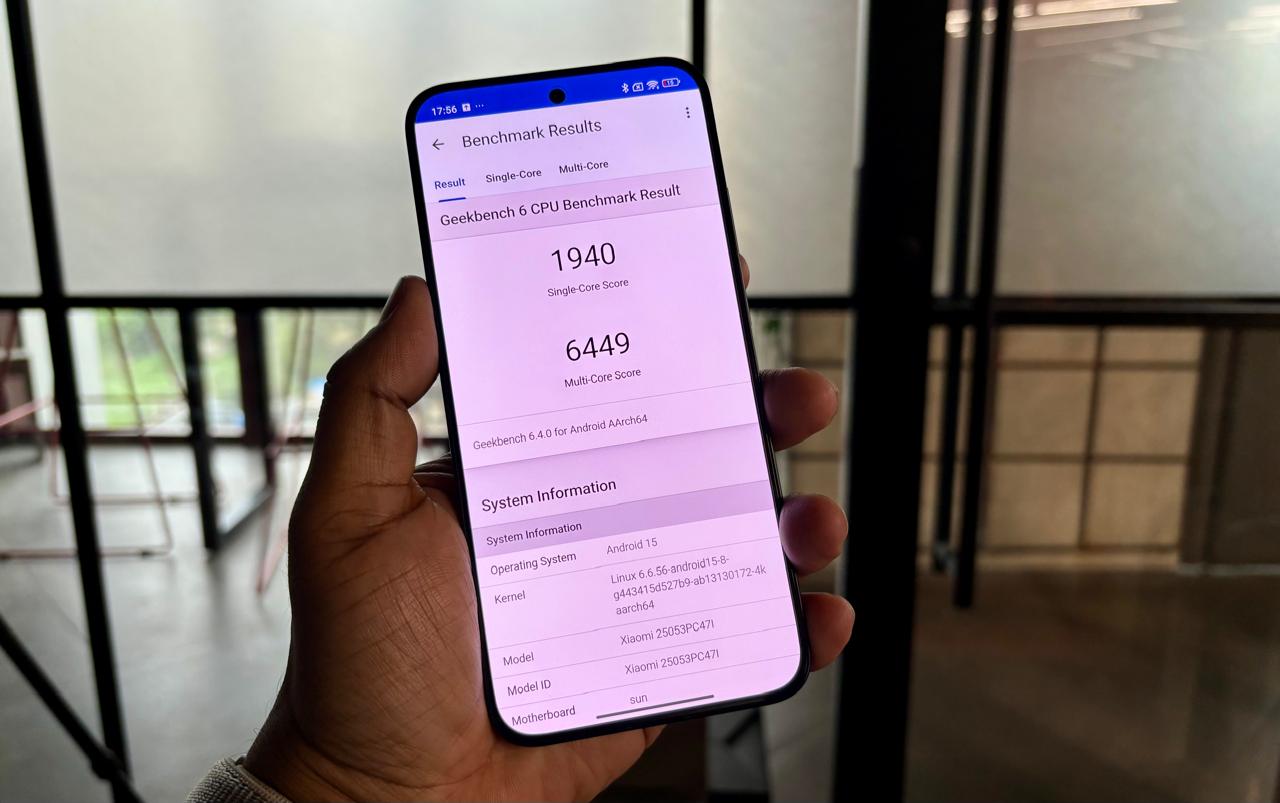
In benchmark tests, the POCO F7 shows impressive results. In Geekbench 6, it reaches a single-core score of approximately 1940 and a multi-core score of around 6449, placing it close to the OnePlus 13R and significantly above mid-range competitors using Snapdragon 7-series chips. However, the chipset does experience thermal throttling under prolonged stress, and the device can become warm during extended gaming sessions, which may impact user comfort.
Running HyperOS 2.0 on Android 15, the F7 offers a smooth and customizable user experience. It promises four major OS updates and six years of security patches. The software is feature-rich, including Google Gemini integration for AI-powered tasks such as photo editing and voice queries. Nonetheless, some users(including me) might find HyperOS to be cluttered compared to cleaner interfaces like Google’s Pixel UI, and occasional lag may be noticeable during fast-paced gaming movements. For gamers, the F7 effectively handles demanding titles like BGMI at medium settings with steady performance.
Camera
The POCO F7’s camera setup is functional but not its strongest feature, reflecting its budget-oriented design. It features a dual-camera system on the rear, consisting of a 50MP primary sensor and an 8MP ultrawide sensor. The front camera includes a 20MP sensor.
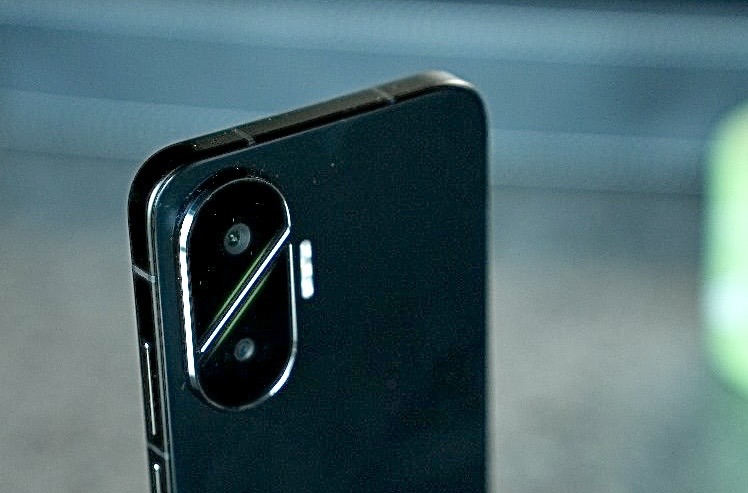
The primary camera performs well in good lighting conditions, capturing sharp and vibrant images with excellent dynamic range and reliable automatic white balance. The colours are pleasing without being overly saturated, although some textures, such as grass, may appear slightly artificial. The 50MP mode delivers softer, more natural images but doesn’t significantly enhance detail, making it less practical for everyday use. At 2x zoom, the primary sensor’s in-sensor cropping provides solid results with good detail, though it cannot compete with dedicated telephoto lenses found on other smartphones.
The 8MP ultrawide camera is a drawback, producing soft, blurry images with limited detail and dynamic range. The 20MP selfie camera performs decently in well-lit conditions, offering lively colours and a wide field of view. However, its fixed focus limits quality and low-light shots may suffer from motion blur.
Video recording offers mixed results. The primary camera supports 4K recording at 60fps with good stabilization, while the ultrawide and selfie cameras are limited to 1080p at 30fps and 60fps, respectively. The “ShootSteady” electronic image stabilization (EIS) mode for 1080p video can lead to focus hunting, thereby reducing its effectiveness. Additionally, wind noise can impact outdoor video recordings due to the sensitivity of the microphones.
Battery
The POCO F7 comes equipped with a remarkable 7,550mAh battery, which stands out as one of its key features, providing exceptional endurance for a device in its price range. This silicon-carbon battery is paired with Xiaomi’s Surge G1 and P3 chips, optimizing both charging and battery health to ensure long-lasting performance.
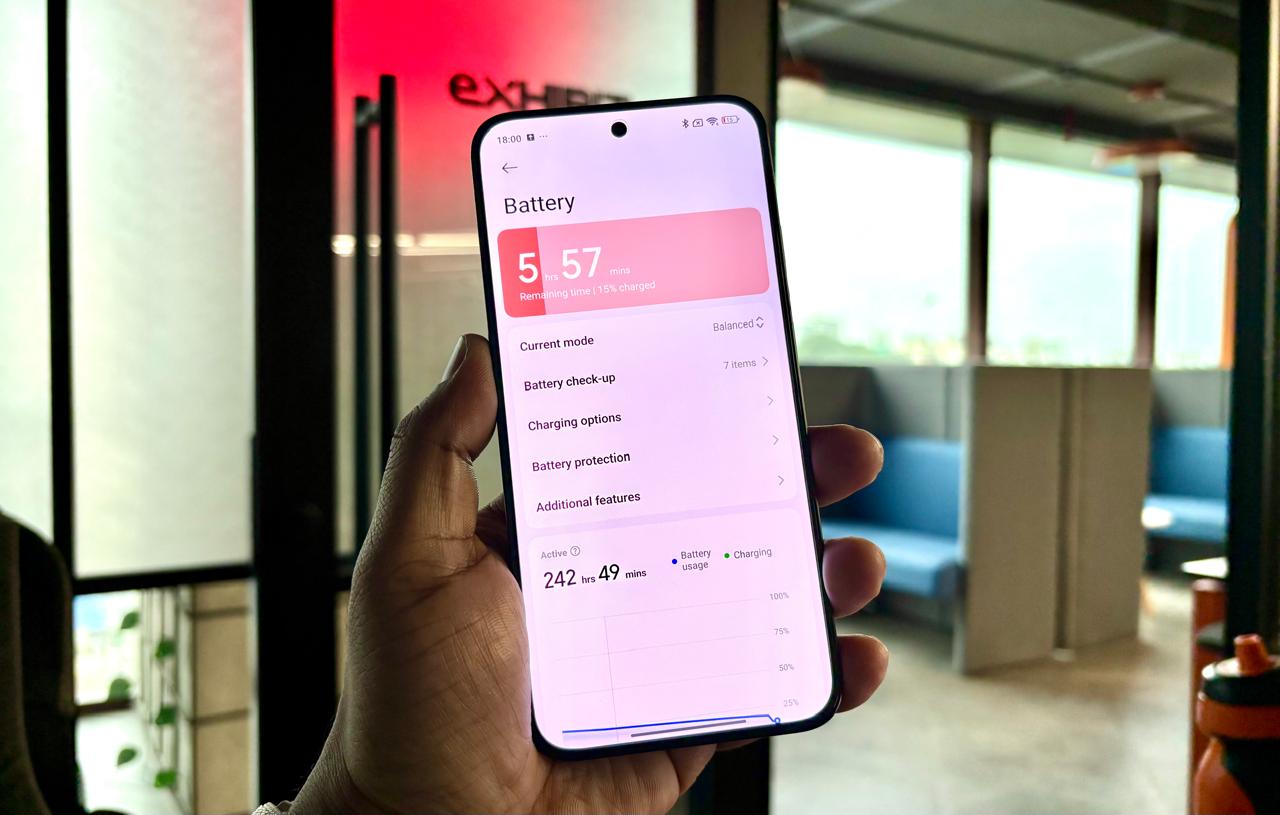
In real-world tests, the F7 demonstrates impressive longevity, lasting 12 to 13 hours with mixed usage, including browsing, social media, messaging, and media consumption. With lighter use and battery optimizations, such as restricting background apps, it can last up to 1.5 days.
During a 30-minute 4K video test, the battery percentage dropped from 100% to approximately 95%, indicating efficient power management while watching video content. Another highlight is the charging capability: the 90W wired HyperCharge support enables the phone to reach 80% charge in approximately 30 minutes, achieving a full charge in around 37 minutes. However, the charging process may cause the phone to warm up. It’s worth noting that wireless charging is not available for this model, as it’s a feature reserved for the F7 Ultra.
Standby performance is also excellent, with the phone lasting up to 4 days with minimal use.


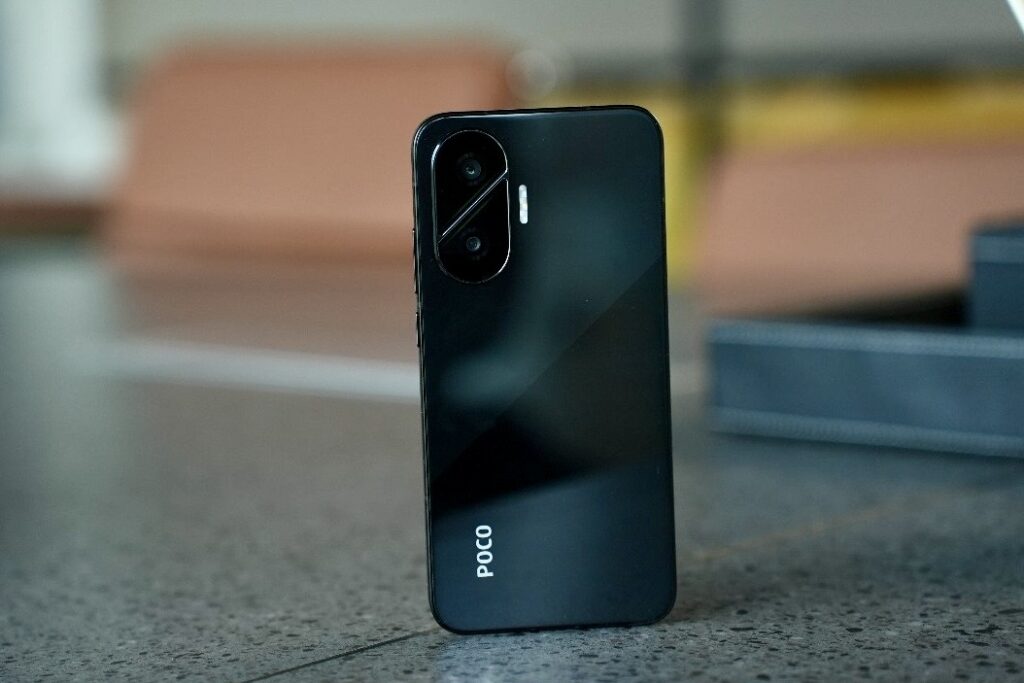
1 Comment
Pingback: OnePlus Nord 5 Review